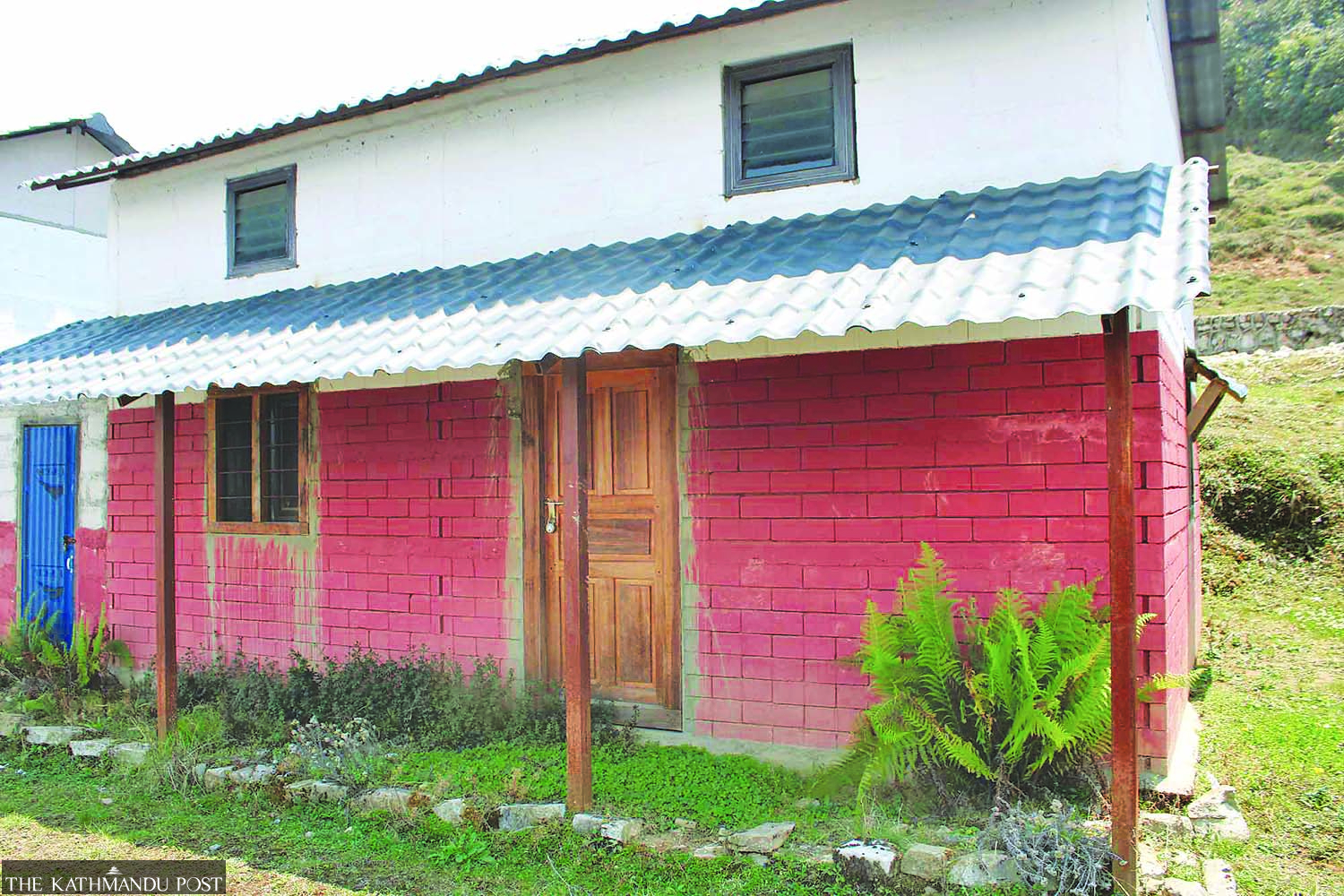National
Gupsipakha integrated settlement for quake survivors largely abandoned
Small homes far from farms, lack of space for cattle, extreme cold, and drinking water problems have driven most families back to their old village in Laprak.
Hariram Upreti
The Gupsipakha settlement in Laprak—built after the 2015 earthquake to provide safe housing for displaced families—now stands largely empty. Despite over 600 houses constructed at a cost of Rs900,000 each, only around 60 households currently reside there.
The remaining homes have either been left vacant or are used as storage units, particularly for potatoes, rather than for permanent living. Grasses and bushes have taken over the abandoned houses.
Following the devastating earthquake of 2015 with its epicentre in Barpak of Gorkha, the Non-Resident Nepali Association (NRNA) undertook the construction of 573 homes in Gupsipakha. The houses were officially handed over to the quake displaced people in 2020.
Additional houses were added later, bringing the total to 603. However, most of the beneficiaries have not relocated to the integrated settlement, citing reasons such as limited farmland nearby, the distance from their traditional fields, small house sizes and harsh weather.
Sukamaya Gurung is one of the few residents who moved into the new settlement soon after the handover. Still, she remains unsatisfied. “The house is too small for a family of four. It’s difficult when guests visit,” she lamented. “I have to walk an hour down to the old village to reach my farm. That’s where our fields are. There’s no land up here, only houses.”
The local residents say that farming—still their primary livelihood—is the main reason they have stayed in the old Laprak village, though it is prone to landslides. For most, walking long distances daily to reach their farmland is impractical, especially for elderly family members and those with livestock.
With few people living there, Gupsipakha has taken on an eerie, deserted feel. Grass grows unchecked in courtyards and nettles sprout from verandas. Some homes remain unfinished or locked, and several are already showing signs of neglect and damage due to lack of proper human care. According to local resident Marsing Gurung, wooden posts buried in the ground have begun to rot, weakening the structures of many homes.

“People come up here only to store potatoes. It’s cold, so produce stays fresh. Otherwise, it’s mostly deserted,” said Marsing. “Some claim it's too cold to live here, but we have a 91-year-old resident, Kanchhi Gurung, who has stayed here since the handover.”
Gupsipakha was chosen for the integrated settlement for its safety after repeated natural disasters—a major landslide in 1999 and the April 25 earthquake in 2015—rendered old Laprak settlement increasingly dangerous. But locals say the new site was developed without considering their livelihoods. Unlike their former homes, Gupsipakha lacks adjacent farmland and is not well-suited for livestock, making sustainable living difficult.
Adding to the frustrations, even with basic infrastructure like a health post and school built in the area, and sewer and drinking water systems under development, many families find it hard to justify the move. The houses are small and ill-suited for larger families.
However, water supply is often disrupted. Water is supplied to the integrated settlement from Bhulmechet spring originating in Charachunungi mountain, about 3,760 metres above sea level. The Drinking Water and Sanitation Division Office, Gorkha, in coordination with various social organisations and donor agencies, had initiated the project in 2017. It was completed at a cost of Rs60 million and inaugurated in November 2020.
Iron pipes have been laid covering an area of around 19 km from the Bhumlechet spring to the integrated settlement. Extreme cold weather conditions lead to pipe bursts disrupting water supply.
Kisan Gurung, chairman of ward 4 of Dharche Rural Municipality, confirms that only 60 families live permanently in Gupsipakha, but he expects more to move in during the monsoon. “Some families come up during the rainy season because it’s safer. But because their farms and cattle are still down in Laprak, many choose to stay there most of the year,” he said. “The distance and lack of connection between housing and livelihood have made relocation unattractive,” he added.
Despite the millions invested in Gupsipakha’s construction and infrastructure, the failure to integrate homes with residents' agricultural and livelihood needs has left the model village underutilised. Until that gap is addressed, most homes in the settlement will remain as they are now—locked, deteriorating, and eerily quiet.




 17.62°C Kathmandu
17.62°C Kathmandu.jpg)












